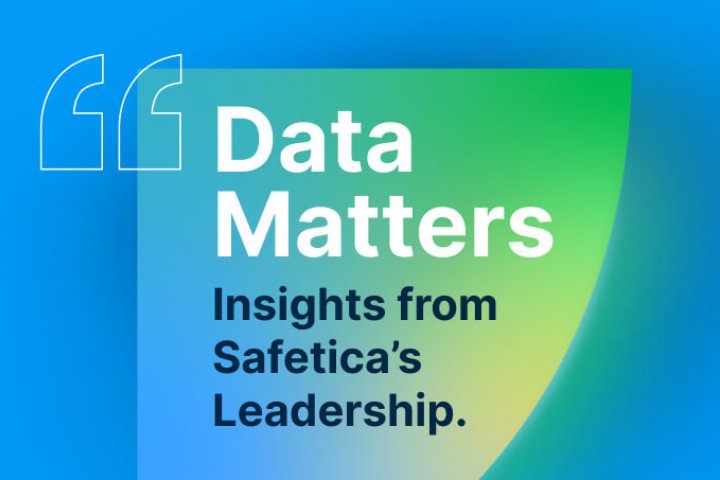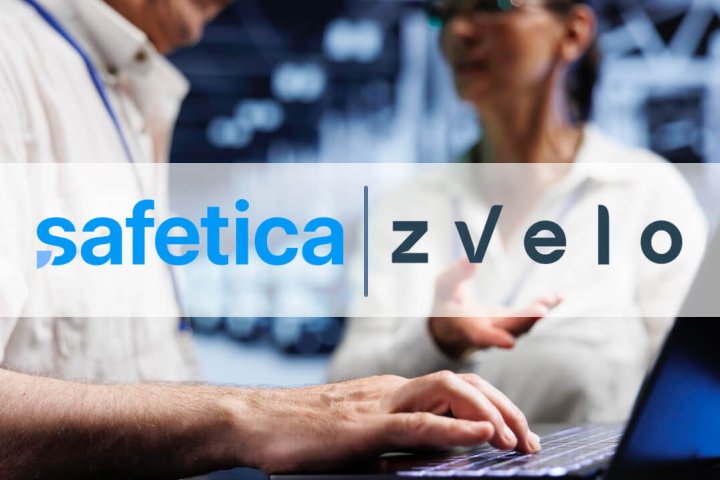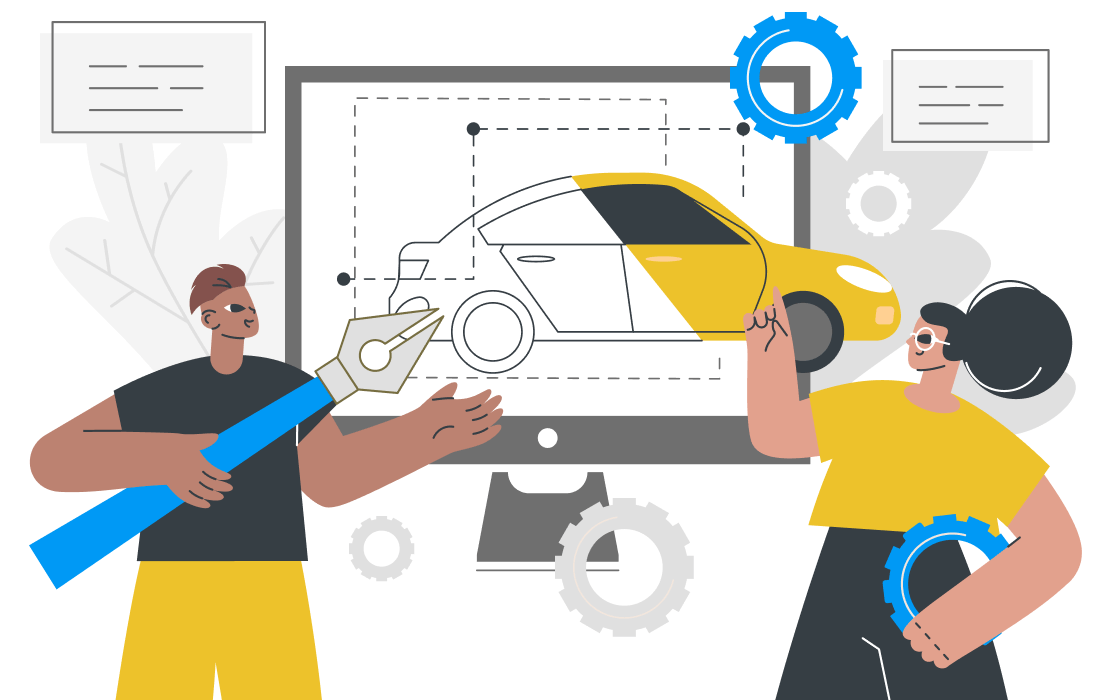The automotive industry, once synonymous with gears, engines, and assembly lines, has undergone a profound transformation in recent years. Today, vehicles are computers on wheels, brimming with data and advanced systems that have redefined the way we drive and interact with our cars. But with these advancements comes a new set of challenges, particularly in the realm of data security.
Gone are the days when our primary concern was safeguarding the supply chain. These days, the threat to data extends far beyond the factory floor. In the year 2022 alone, automotive API attacks increased by 380% from the previous year, constituting 12% of all reported incidents (based on Upstream’s 2023 Automotive Cybersecurity Report). Even as original equipment manufacturers (OEMs) deploy advanced IT cybersecurity measures, there’s no stopping cyberattacks.
In this article, we're going to rev up your knowledge about the importance of Data Loss Prevention (DLP) in the automotive industry. We'll cruise through the unique challenges this industry faces, delve into real-world data breach stories, and finally, hit the brakes at the strategies you can employ to protect your data and your reputation. Ok, we’ll stop with the puns now.
Challenges in DLP in the automotive industry
The automotive sector has become an irresistible target for cybercriminals. The number of annual cybersecurity incidents has risen exponentially, spanning a wide spectrum of threats, from remote assaults aimed at crippling operations to data theft and ransom demands.
Here are some of the challenges that the automotive industry faces regarding protecting its sensitive data:
Connected vehicles
Modern cars are highly connected, with various components and systems relying on data exchange to function efficiently.
While this connectivity offers obvious benefits, it also expands the attack surface:
- Interconnectedness: The interconnectedness of vehicle systems means that a vulnerability in one area can potentially compromise the entire vehicle. Attack vectors can range from infotainment systems and mobile apps to keyless entry systems and charging station exploitation.
- Data volume and diversity: Systems and devices in vehicles generate huge amounts of data in various formats. Managing, analyzing, and protecting this data requires advanced DLP strategies.
- Real-time security: As vehicles become more software-defined, real-time security monitoring becomes imperative. Identifying and mitigating threats as they occur is very important because if security can’t keep up, hackers will easily exploit vulnerabilities and potentially compromise the safety, privacy, and functionality of these types of vehicles.
Global supply chains
The automotive industry's global supply chains are vast and intricate. Data is exchanged between multiple stakeholders, including suppliers, manufacturers, and distributors, creating numerous entry points for potential data breaches. Coordinating data protection measures across this expansive network can be daunting.
Here are some key challenges:
- Supply chain vulnerabilities: Global supply chains can be vulnerable to cyberattacks or data breaches at any point in the network. An attack on a supplier or partner can have ripple effects throughout the entire ecosystem. It’s imperative that all links in the supply chain uphold high-security standards because the whole is only as strong as the weakest link.
- Data sharing risks: Collaborative innovation and data sharing among partners are essential for developing advanced automotive technologies. However, sharing sensitive data increases the potential for breaches or leaks, especially when partners have varying cybersecurity standards.
Remote work and connectivity
Securing remote work environments, especially in the automotive sector, where intellectual property and sensitive business information are paramount, requires a robust DLP strategy that accommodates remote workforces without compromising data security.
While remote work offers flexibility and continuity, it also poses data loss prevention challenges:
- Endpoint security: With employees working remotely, securing endpoints like laptops, smartphones, and tablets (including BYOD, aka “bring your own device”) becomes critical. These devices may contain sensitive data and can be vulnerable to theft or compromise.
- Access control: Managing access to sensitive automotive data when employees are working from various locations requires robust access control mechanisms. Ensuring that only authorized personnel can access critical data is challenging yet crucial.
![]()
Further reading: Data Security in the Age of Remote Work | BYOD Security Policy: Top Risks and Best Practices
Insider threats
While external cyberattacks receive considerable attention, insider data theft and corporate espionage can be equally damaging. Malicious or negligent employees with access to sensitive information pose a constant risk, regardless of the industry. DLP strategies must include measures to monitor and mitigate insider threats effectively.
Key points to consider:
- Diversity of insider threats: Insider threats come in various forms, from disgruntled departing employees seeking financial gain to staff members inadvertently exposing sensitive data. Business partners and suppliers with access to critical information can also become a source of insider threats, yet one that is even harder to prevent.
- Monitoring and mitigation: To combat insider threats, businesses in the automotive industry should focus on proactive monitoring and effective mitigation measures. This includes access controls, conducting regular employee training on data security best practices, and leveraging advanced DLP software that can detect suspicious activities in real time.
![]()
Further reading: What is an Insider Threat? | Departing Employees: How to set offboarding processes | How to educate employees about data security
Data regulations and compliance
The automotive industry faces a complex landscape of data privacy regulations that continue to evolve in response to digital transformation. This is not limited to a single country's legislation but extends across international boundaries. For instance, the EU's General Data Protection Regulation (GDPR) and state laws in the US, such as California's California Consumer Privacy Act (CCPA) and Virginia's Consumer Data Privacy Act (VCDPA), all have implications for the automotive sector.
Beyond these, various countries are publishing standards or guidelines tailored specifically to the automotive industry. In the EU, there's the Trusted Information Security Assessment Exchange (TISAX), while China has introduced the "Auto data security compliance and practice guidance," among others.
Here are some key considerations and processes that automotive companies must address:
- Data localization: Some regulations may require data to be stored or processed within specific geographic regions. Achieving compliance while maintaining data accessibility can be a complex task that involves strategic data architecture and infrastructure decisions.
- Consumer rights: Regulations often grant consumers rights over their data. Automotive companies must establish processes for data access, portability, and deletion while ensuring that data stays safe and secure.
- Incident reporting: Compliance may involve obligations related to reporting data breaches or incidents. Companies must have incident response plans, making sure they can promptly detect, assess, and report data breaches while taking necessary corrective actions.
![]()
Further reading: What is GDPR: Scope, purpose, and how to comply | CCPA Compliance | What is VCDPA: Scope, purpose, and how to comply | What is TISAX: Scope, purpose, and how to comply
Recent data breaches in the automotive industry
In the past few years, the automotive industry has witnessed a surge in cyber threats due to the increasing digitization of in-car systems. This digital transformation has introduced software and connectivity to car IT systems, making them vulnerable to various cyberattacks.
A significant portion of these cyberattacks was conducted remotely by hackers aiming to disrupt businesses, steal property, and demand ransoms. But
Examples of data breaches in the automotive sector include:
- Tesla's Insider Job (2023): In 2023, Tesla experienced an insider attack that left more than 75,000 individuals’ personal information, along with employees’ personal information, customer bank details, and production secrets, available to a German media outlet.
- Toyota's GitHub Mishap (2022): Toyota faced a data exposure incident originating from the inadvertent publication of its source code on GitHub, impacting users of the T-Connect smartphone app that links to Toyota smart vehicles. The source code contained access keys to the company's data server, potentially compromising the email addresses and customer management numbers of almost 300,000 users. Toyota attributed this breach to a development subcontractor's error.
- Audi and Volkswagen’s Data Leak (2021): A data breach at Audi and Volkswagen led to the exposure of over 3 million customers’ personal information, though details of how exactly the leak happened remain unclear—apparently, the data compilation was left unsecured online at some point.

Best practices for enhanced DLP in the automotive industry
Now that we’ve seen how intricate data security in the automotive industry can be, let’s briefly look at some best practices that automotive companies can integrate into their data loss prevention strategies to reduce the risk of data breaches.
- Data classification: Start by categorizing data based on its sensitivity. This classification helps in applying appropriate security measures to each data type.
- Risk assessment: Regularly conduct risk assessments to identify vulnerabilities and potential threats to data. Consider both internal and external risks, including insider threats, cyberattacks, and supply chain vulnerabilities.
- Encryption: Implement end-to-end encryption for sensitive data both at rest and in transit. Encryption ensures that even if data is intercepted, it remains unreadable without the proper decryption key.
- Access control: Limit data access to employees who require it for their roles and ensure that no one unauthorized has access to your data.
- Employee training: Train employees on data security best practices, including how to recognize and report suspicious activities. Make data security awareness an integral part of the corporate culture, and make security policies easy to understand, easy to implement, and easy to remember.
- Endpoint security: Protect endpoints such as laptops, smartphones, and other devices with security software. If employees are using their own devices, make sure to have policies and procedures set up for BYOD.
- DLP software: Invest in advanced DLP software that can analyze, monitor, detect, and prevent unauthorized data transfers or leaks. These tools can provide real-time alerts and insights into data usage patterns. Your first step could be to book a demo call with Safetica.
- Incident response plan: Develop an incident response plan that outlines the steps to take in case of a data breach. Test this plan regularly through simulated exercises to ensure a swift and effective response. Don’t wait until you need this plan to develop it.
- Vendor risk management: Assess the cybersecurity practices of third-party vendors and suppliers and draw up good contracts that detail security expectations. Ensure that they adhere to similar or stricter security standards to prevent supply chain vulnerabilities.
- Data backups: Regularly back up critical data to secure, offsite locations. This ensures data recovery in case of data loss.
- Monitoring and auditing: Implement continuous monitoring of data access and usage. Regularly audit data access logs to identify any suspicious or unauthorized activities.
- Regular updates: Keep all software, including operating systems and security tools, up to date with the latest patches and updates. Vulnerabilities in outdated software can be exploited by hackers.
- Regulatory compliance: Stay updated with the latest data privacy regulations and standards applicable to the automotive industry. Take steps to comply with these regulations to avoid legal penalties (and data loss).
How Safetica’s DLP solutions can protect data in the automotive industry
Safetica understands that automotive companies are not just in the business of manufacturing vehicles but managing complex data ecosystems. Using Safetica’s DLP solutions will allow you to prevent data leaks and help investigate incidents, ensure regulatory compliance, and prevent human errors and deliberate malicious actions.
Industry Expertise: With years of experience in the cybersecurity field, Safetica comprehends the specific challenges and risks faced by the automotive sector. Our solutions are designed to address these industry-specific concerns effectively.
Data classification: Safetica's software excels in data classification, a crucial aspect of DLP. It helps automotive companies categorize their data based on context, making it easier to apply the right security measures to protect critical information.
Encryption and access control: Our software provides robust encryption capabilities to protect data both at rest and in transit. Access control features ensure that only authorized personnel can access sensitive data, reducing the risk of unauthorized data leaks.
Safetica’s DLP products are simple and smart. It’s not just a slogan. We are committed to simplicity, automation, and a fast adoption process. Data loss is a headache, but your DLP system shouldn’t be.
Next articles

The Age of Data: Why Cloud Growth Raises New Security and Ethics Risks
As cloud adoption surges, security and ethics struggle to keep up. Safetica’s CTO shares how organizations can manage risks in the era of data at scale.







